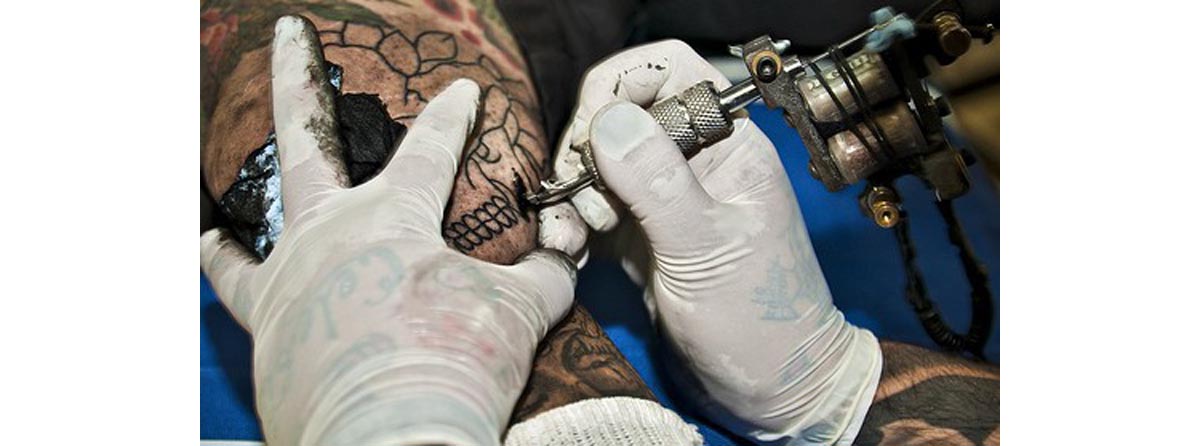Tattooing is a form of art that has been practiced by tribal people as a religious ritual and a way of life. Over the past few decades, tattoos have become extremely popular and almost one quarter of Americans under the age of 30 have at least one or more tattoos on their skin. An increasing number of teens and young adults prefer to get tattooed as a form of self-expression. Tattooing is a form of decorative art that people indulge in to mark special events in their lives, as a mark of remembrance for a loved one, or to show their commitment to someone special.

Tattoos can be permanent or temporary. Permanent tattoos are more harmful and therefore people should opt for temporary tattoos that last for a couple of days. Permanent tattoos are difficult to remove and can only be removed by using lasers. Even then, they might leave a scar on the body. Tattoos might appeal to you during a specific phase in your life but you must think twice before risking your life just to look cool. Getting a tattoo is not only painful and expensive but also exposes you to a number of health and skin risks.
How are Tattoos Done?
Tattoos are done by injecting colored pigments into the skin’s inner layer known as dermis, through pricks. Tattoo artists often use a hand-held machine (similar to a sewing machine) with one or multiple needles that pierce the skin repeatedly and inject the tattoo colors in the form of ink droplets to form a design. Tattoo artists know the exact depth to which the tattoo needle needs to be pierced so as not to cause bleeding and unbearable pain. Getting a tattoo might take about 15 minutes to several hours depending on the design and complexity of the tattoo. Since tattoos are not done on the epidermis which is renewed throughout your lifetime, they tend to be permanent. Tattoos are not done under anesthetics and therefore might cause pain along with minor bleeding.
Tattoo inks are mostly a combination of metallic salts (oxides, selenides, and sulphides) and organic dyes, in a carrier solution made for ease of application. Typically each color and each brand of ink has a different constitution. The carrier solution might contain methanol, denatured alcohol, rubbing alcohol, detergents, formaldehyde, and other toxic aldehydes. Most tattoo manufacturers do not even know about the substances they are puncturing inside the skin. There is rarely a disclosure of ingredients used in the coloring agents.
Skin Risks Associated With Tattoos - part 2
Tattoos are done by breaching the skin and therefore might pose considerable skin risks. Common skin risks associated with tattoos are listed below.

Infection
If the tattooing equipment and needles are not properly sterilized, there is a huge risk of getting infectious diseases such as hepatitis, HIV, and other forms of skin infections caused by Straphylcoccus aureus. The infections that might be transmitted by tattooing include viral, bacterial, and fungal infections. Bacterial infections spread by tattooing might cause impetigo, septicemia, toxic shock syndrome, syphilis, and tuberculosis. Fungal infections that are often spread by tattoos include sporotrichosis which can result in the formation of nodules, abscesses, and ulcers.
Skin cancer risk
Tattoos can also pose a risk for skin cancer as it is difficult to detect cancer-related changes in moles, especially if the tattoo is placed over the mole. Tattoos are also known to cause skin reaction which might result in the creation of a bump which resembles squamous cell carninoma, a specific type of skin cancer.
Formation of Granulomas
Tattoo pigments can result in the formation of nodules that are caused by chemical and physical irritants in tissues.
Keliod Formation
People who are prone to developing keliods are at a greater risk of keliod formation because of the tattoo. Keliods are specific kinds of scars that continue to grow and resemble tough heaped up scars appearing abruptly above the skin.
MRI complications
There have been reports wherein people having permanent makeup or tattoos complained of swelling and burning in the affected area on undergoing Magnetic Resonance Imaging (MRI). Tattoo pigments might also interfere with the quality of MRI images. Therefore, it is always recommended that people with tattoos should inform the radiologist about the tattoo before the MRI scan.
Allergic Reactions
People might also experience certain types of allergic reactions because of tattoos. Typical allergic reactions to tattoos include allergic contact dermatitis, photoallergic dermatitis, lichenoid allergic reaction, and pseudolymphomatous allergic reaction.
Dissatisfaction: A Common Problem with Tattoos
One of the most commonly observed problems with tattoos is that people tend to get dissatisfied with their tattoos. Moreover, tattoos also tend to fade with time especially if the tattoo pigments are injected too deep in the skin. You must also remember that your body changes with time and even the styles go out of fashion very soon. Tattoos might look good on your body at a particular time but as you grow old and your body undergoes ageing, they might not appear as attractive.
Certain people get tattoos done to commemorate certain events or people. However, over a period of time, if you realize that you commemorated the wrong person or event, you are stuck with the tattoo.
Tattoo Removal
Tattoos are typically removed by releasing the tattoo ink pigmentation and removing the skin indentations that might have resulted from outlining and shading needles. Popular techniques used for removing tattoos include laser removal, surgery, and regenerative skin grafting. Certain tattoo removal creams are useful for removing specific color pigments. People also use Trichloroacetic acid solutions for removing skin lines associated with tattoos.
Laser tattoo removal is a costly proposition and involves the risk of permanent skin discoloration and scarring. This technique involves the use of laser for targeting and breaking the tattoo ink into smaller pieces that are gradually removed from the skin over a period of time. The laser removal technique might leave your skin overly sensitive to light and bacterial infections.
- “Malignant melanoma arising at tattoo sites used for radiotherapy field marking”, by Arie H. Bartal, et al. Published in the September, 1980 issue of the British Journal of Radiology, accessed on April 24, 2013
- “Risks Associated with Tattooing and Body Piercing”, by Ronald L. Braithwaite, et al. Published in the Vol. 20, No. 4 (1999), issue of Journal of Public Health Policy, accessed on April 24, 2013, 2013.
- Photo courtesy of Eneas De Troya by Flickr : www.flickr.com/photos/eneas/4944376224/
- Photo courtesy of M Glasgow by Flickr : www.flickr.com/photos/glasgows/154573674/

